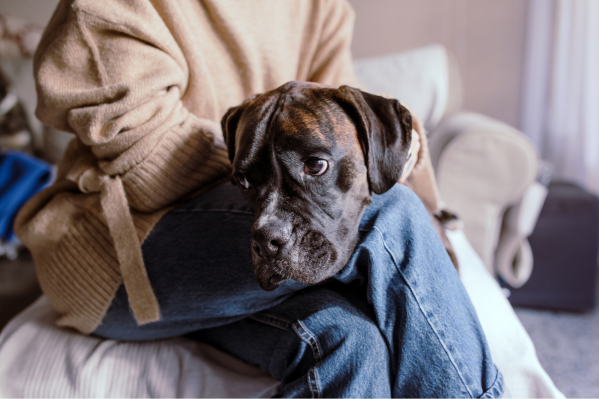It can be scary if you come across a lump or a bump when giving your pup a good pet.
The good news, however, is that many lumps on dogs are benign in nature and won’t cause your pet any long-term harm.
That being said, there are some lumps that might be cancerous or cause your pooch some discomfort. Here’s a general overview of what to do if you find a lump on your dog and any action you should (or should not) take to treat it.
I found a lump on my dog—what should I do?
Not all lumps are the same, and what you should do varies depending on your dog’s overall demeanor, as well as the lump in question.
“If your dog is acting ill and the lump looks particularly angry, it's worth getting to your vet as quickly as possible,” explains Jo Myers, DVM. “A lump that is bleeding, oozing, painful, or making your dog sick should be checked out sooner rather than later.”
If your dog seems well otherwise and doesn’t have symptoms like vomiting, diarrhea, weight loss, or low appetite or energy levels, you might not have to make a vet appointment right away. It’s a good idea, however, to keep track of the lump, including taking photos of it to see if it changes over time; noting whether it’s hard or soft; observing if it’s painful or itchy to your pup; and if it’s leaking anything.
“A lump on a young dog who's acting totally healthy is much more likely to be the result of an injury, parasite, or a benign skin tumor than something serious like cancer,“ says Dr. Myers. “With that in mind, as long as the lump isn’t changing or the dog isn’t acting sick, it can be reasonable to wait until your next visit,” though Dr. Myers adds that, “Anytime you want to know for sure what a lump is, it's better to get to the vet sooner rather than later to have it checked out.”
Potential causes of lumps on dogs
There are several things that could cause a lump on your dog. Some injuries, scars, or infections (especially infections from an embedded foreign object) may raise the skin of your pup and make it feel bumpy.
Here’s a list of some other issues that could cause a lump on your pup:
Parasites: Botfly larvae, also called warbles, develop in the tissue of animals and form a cyst before they come out.
Abscesses: Abscesses are pus pockets that become trapped in the skin. They are often painful and can either be firm to the touch or soft like a water balloon.
Hematomas: Sometimes a localized mass of blood forms a blood blister on your pup. These blood blisters or hematomas often occur in a dog’s ear.
Warts: Warts are caused by viruses and take the form of small, cauliflower-looking bumps.
Hernias: Like in humans, a hernia in a dog is when part of the intestine pushes through muscle. They are usually genetic in nature, though can also occur if your dog experiences physical trauma.
Enlarged lymph nodes: Sometimes a dog’s lymph nodes or glands can become swollen and noticeable to the touch. Common areas where dogs have enlarged lymph nodes are the armpits, just under the jaw, at the front of the shoulders, the groin, and the knees.
Tumors: Tumors refers to any abnormal skin growth or lump. A tumor, like a button tumor found often on puppies, can be benign, though some tumors are also cancerous.
Your vet can help diagnose what type of lump your dog has and recommend a course of action accordingly. They can also identify the cause for everything prior to tumors on the list above based on a physical examination and analysis of any fluid, discharge, or cells found inside them under a microscope. For tumors, your vet will take a biopsy to determine whether the lump is cancerous or not.
How are lumps on dogs treated?
In many cases, the best course of action may be to do nothing. Vets usually recommend benign tumors be left as-is unless they’re large enough to be annoying. Lumps from warts or minor injuries will also go away on their own.
Some lumps may benefit from using topical creams or medications to help them go away. Your vet may also combine these medications with simple surgical procedures like lancing, flushing, and draining the lump.
Tumors of all kinds can only be removed via surgery, and if the tumor is cancerous, your vet may recommend chemotherapy or radiation treatment.
Whatever kind of lump your dog has, the experts at Pawp are available 24/7 to help you with all your pet-related questions.
Other resources
https://www.akc.org/expert-advice/health/dog-skin-lumps-bumps-when-you-should-worry/
